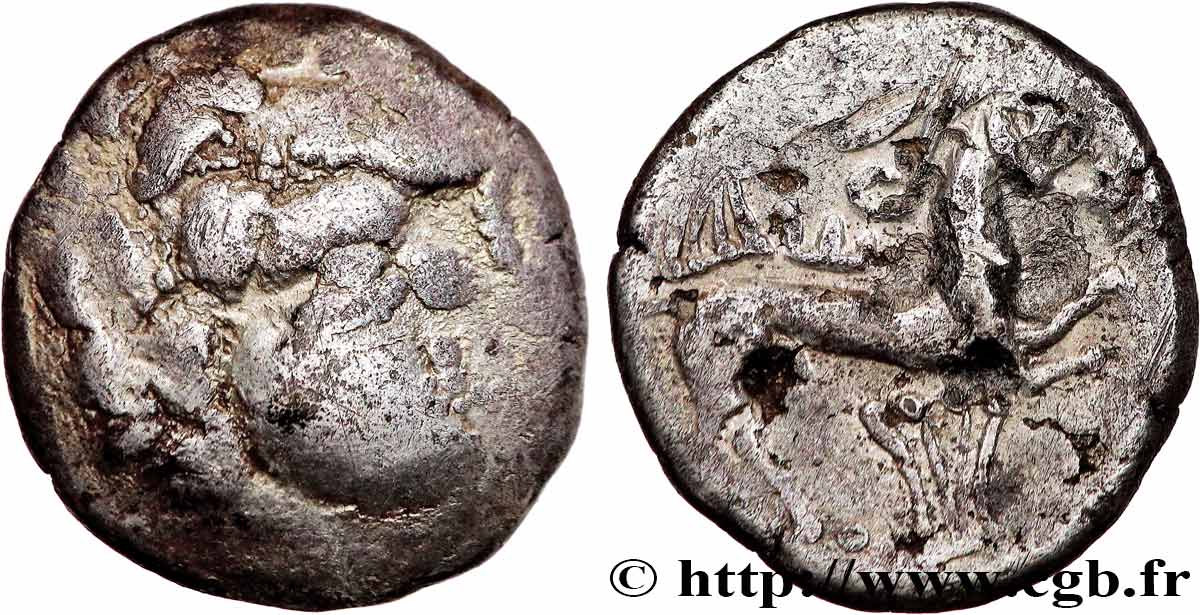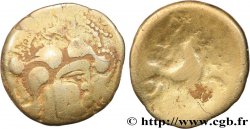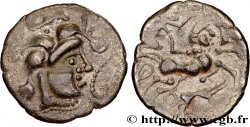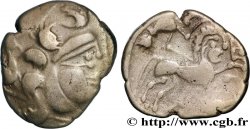Live auction - bga_780971 - GALLIA - BAÏOCASSES (Area of Bayeux) Statère d’argent au sanglier et à la lyre
Чтобы принять участие в торгах, вы должны войти в систему и стать подтвержденным участником аукциона. Войдите, чтобы сделать ставку. Ваш аккаунт будет подтвержден в течение 48 часов. Не ждите до закрытия торгов, чтобы зарегистрироваться.Сделав ставку на данный товар, вы вступаете в юридическое соглашение на покупку выбранного товара и нажатием кнопки «Сделать ставку» подтверждаете принятие вами условий интернет-аукционов cgb.fr.
Ставка может бить сделана только в полном эквиваленте евро. Торги закроются согласно времени, указанному в описании товара, все ставки, сделанные после закрытия торгов, учитываться не будут. Не следует откладывать предложение вашей ставки до последнего момента, так как система может не успеть обработать вашу заявку, и ваша ставка не будет принята. Более детальную информацию вы найдёте здесь: FAQ по интернет-аукционам.
Все ставки победителей подлежат комиссии 18%.
Все ставки победителей подлежат комиссии 18%.
| Оценить : | 750 € |
| Цена : | Нет ставки |
| Максимальная предлагаемая цена : | Нет ставки |
| Конец торгов : | 06 December 2022 15:52:41 |
Тип Statère d’argent au sanglier et à la lyre
Дата: IIe - Ier siècle AC.
Монетный двор / Город: Bayeux (14)
Металл: billon
Диаметр: 18,5 mm
Ориентация осей монеты: 6 h.
Вес: 5,72 g.
Редкость: R3
Комментарии о состоянии
Monnaie centrée à l’usure régulière
Ссылки в каталоге: :
Лицевая сторона
Аверс: легенда: ANÉPIGRAPHE.
Аверс: описание: Tête humaine à droite, les cheveux en grosses mèches ; un sanglier dans la chevelure ; cordon perlé enroulé devant le visage.
Обратная сторона
Реверс: легенда: ANÉPIGRAPHE.
Реверс: Описание: Cheval androcéphale galopant à droite ; une lyre entre les jambes ; restes de l'aurige au-dessus du dos ; vexillum devant la tête.
Комментарий
Trace de double frappe de la lyre sur la croupe du cheval au revers. Ce type manque au Nouvel Atlas et à toutes les publications consultées sauf au Musée de Rennes qui en conserve une galvano du XIXe siècle (réalisée à partir d'un exemplaire usé) mais mal classé en Vénètes (cf. n° 38). Ces deux monnaies étaient issues du même coin de droit, sans qu'il soit possible de trancher pour le coin de revers.
Trace of double strike of the lyre on the horse's rump on the reverse. This type is missing from the New Atlas and from all the publications consulted except at the Rennes Museum which preserves a 19th century galvano (made from a worn copy) but poorly classified as Venetian (see no. 38). These two coins came from the same right die, without it being possible to decide for the reverse die.
Trace of double strike of the lyre on the horse's rump on the reverse. This type is missing from the New Atlas and from all the publications consulted except at the Rennes Museum which preserves a 19th century galvano (made from a worn copy) but poorly classified as Venetian (see no. 38). These two coins came from the same right die, without it being possible to decide for the reverse die.








 Cообщить об ошибке
Cообщить об ошибке Распечатать страницу
Распечатать страницу Отправить мой выбор
Отправить мой выбор Задать вопрос
Задать вопрос Consign / sell
Consign / sell
 Информация
Информация









